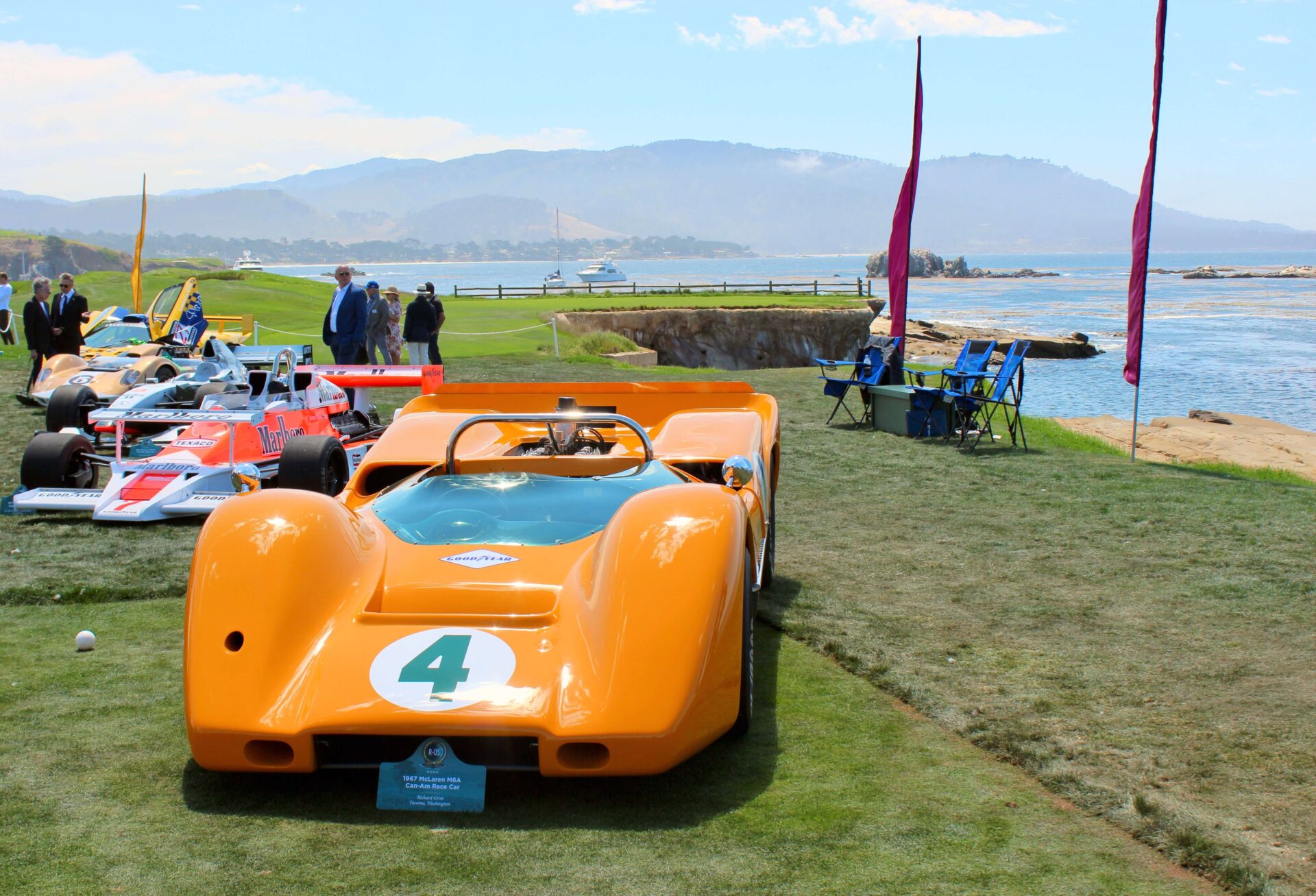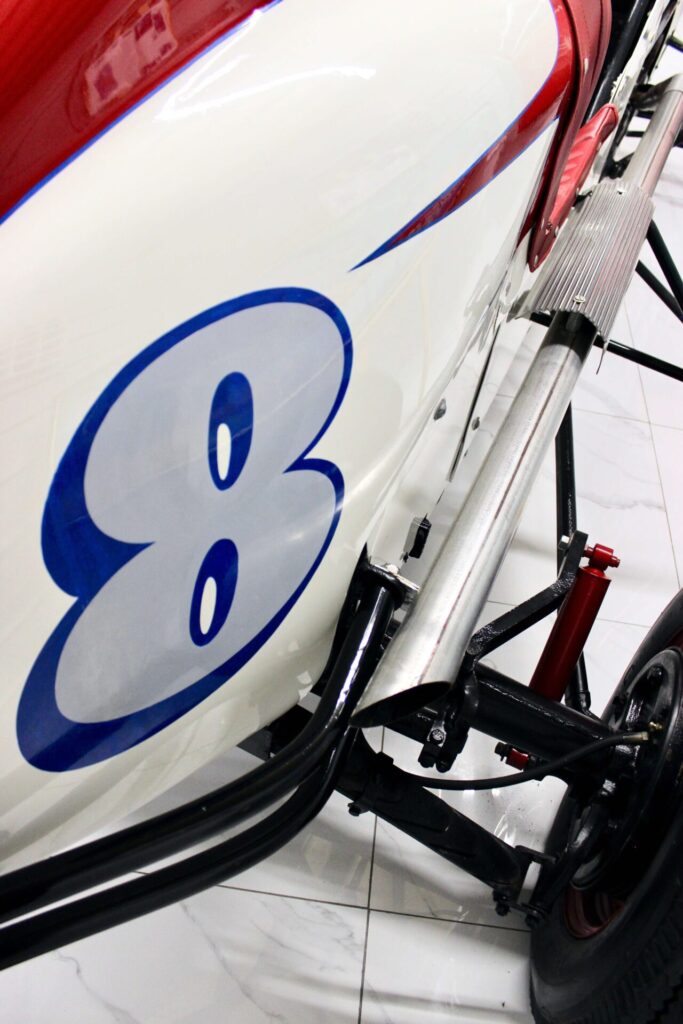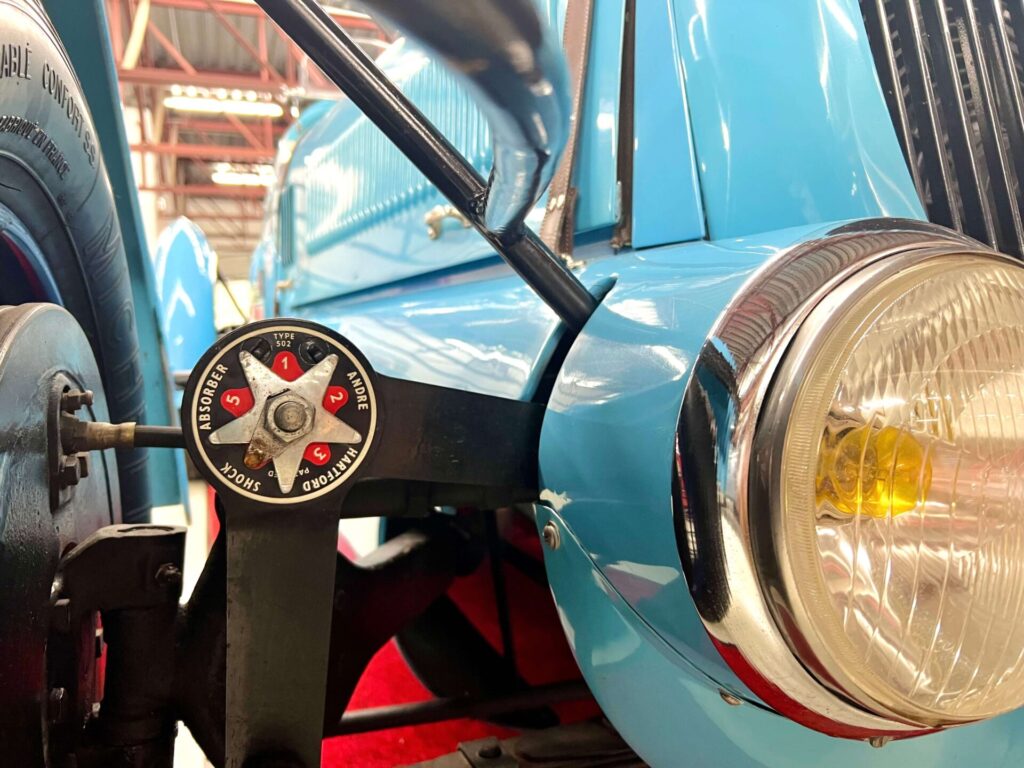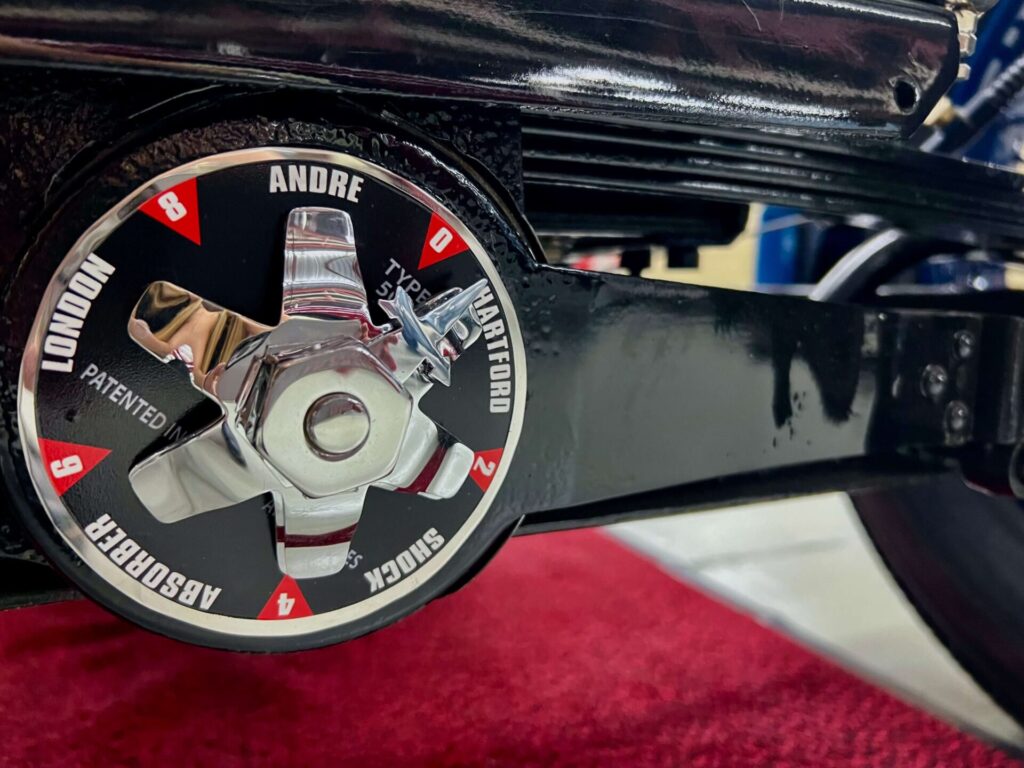The Automotive Dream “One man and his dream had not simply left the world with an engine and four wheels; Henry Ford and his Model T had influenced people's everyday lives - where they lived, how they spent their leisure time, even how they viewed themselves.” - Gary...
An Introduction to Car Racing

Recent posts
Lagonda 16/80 Special Six 1933
English Touring The car we present to you this week is the Lagonda 16/80 Special Six in the Demers Car Collection. Lagonda was a luxury British car brand that Aston Martin eventually absorbed. Through its association with Aston Martin, it is sometimes hard to remember...
An Introduction to Lagonda
Before Aston Martin “The history of Lagonda cars is synonymous with sophistication, opulence, and groundbreaking performance” - An article for Discovery UK Today, we may recognize the name Lagonda from its association with Aston Martin. Before these two brands...
Cadillac Model A 1903
The Standard of the World “No other American car on the market in the first decade of the century was constructed to higher standards than Cadillac.” - Stephen W. Sears in The Automobile in America Some of you may know that Cadillac has long had the slogan “Standard...
The How, Where and Why of Early Car Racing
“Racing is the soul and maybe even the starting point of the auto industry.” – Mark Hames, “Why racing matters,” in Automotive News
Many have remarked that car racing was born as soon as there were two automobiles to place next to each other. Competition is part of human nature. In this context, it is not surprising that car racing developed along with cars. Its role in car history is not only to provide an adrenaline rush or to boost pilots and automakers’ egos. It also played an important role in people’s acceptance and adoption of the new technology.

How Did It All Start?
Although the car as we know it first appeared in Germany, it is in France that the car industry flourished. Many reasons like overall enthusiasm about self-propelled vehicles and road conditions made that possible. So it isn’t surprising that car racing first developed in France as well.
It is widely accepted that the first automotive race took place in 1894 between Paris and Rouen, France, a distance of about 126 km or about 78 miles. Twenty-one “horseless carriages” competed on the round trip to Rouen.
Not all vehicles had combustion engines, in fact, the first to arrive at destination was a steam powered De Dion that averaged a speed of about 15 km/h or about 10 mph. Unfortunately for its owner, the goal of the race was to test the vehicles’ reliability and practicality as road machines. The judges did not think that the De Dion car had those qualities. The “car” driven by Count de Dion was a steam powered tractor pulling a (horseless) carriage. The judges deemed it impractical as a road vehicle.

A Peugeot and a Panhard-Levassor shared the first prize. We can all raise our hat to Peugeot, which still produces cars to this day, for winning the first official car race! Count de Dion went home with the second prize, and persevered in the field of car manufacturing. He would eventually become an important player in the European market.
Where Did It Go?
Quickly, more races were organized. Only one year later, a second race took place between Paris and Bordeaux where the winning car, a Panhard, performed at an average pace of 24.15km/h or about 15 mph. This is a 50% increase in average speed over the past year. The same year, the Unites States saw its first race. While manufacturers and early “race” organizers wanted to focus on reliability, the public quickly became enthused with speed.
Regulations also quickly developed. Car racing and technological improvements in the field accelerated between the two World Wars. Races were becoming more and more sophisticated events. The increase in innovation matched the growing interest in racing and the increased regulation. By the turn of the 20th century, the average race speed reached 64 km/h or about 40 mph.
For example, in the 1930s, the European Grand Prix regulators decided to limit engine capacity to 2 liters to slow down races out of concern for safety. This just ended up challenging constructors to find other ways to achieve ever higher speeds. Because of this restriction, turbocharged engines were born and principles of aerodynamics were first applied to race car bodies. The challenge was so easily met that a few years later, engine capacity was reduced further to 1,5 liters spurring more innovation. Today, the top racing speeds of an F1 car is believed to be around 360 km/h or about 223 mph.

Why is Car Racing Important?
Acceptance
In the early days, highly publicized car racing events allowed car makers to prove the practicality and dependability of “horseless carriages.” Not everyone was convinced to get rid of their horse when the first automobile rolled around. As discussed, the first 1894 race was actually a Reliability Trial. It allowed car makers to prove the safety and usability of this new invention, developing their notoriety and demand. A marketing ploy, might I say?
Funding
In the early days, success on the track could bring you financial backing to start producing your own cars! Winning a race against the country’s favorite earned Henry Ford the recognition and investments needed to start Ford Motor Co. in 1901. In 1911, William C Durant, cofounder of General Motors, recruited Louis Chevrolet, a famous car racer, to create a new American car brand that would wear his name. Arguably, without success on the track, automotive history would be much different.

Innovation
Car racing was also the breeding ground for innovation. In order to one up each other, competition entrants had to continuously improve themselves. Often, technology developed on the track trickled down to production cars and made them better. The innovations brought on by racing did not only make cars go faster, production cars’ improvement in brakes, tires, rear view mirrors, traction control, crash absorption, fuel efficiency and overall safety have also benefited from advances made on the track.
Sales
Winning races could also help you sell cars. There is even an expression for it: “Win on Sunday, sell on Monday,” which refers to a long tradition in car racing where cars that win on the track on the weekend will help sell cars the next day for the brand. Many entrepreneur pilots would modify cars to race, once the car’s added value was proven on the track, it would be sold at a profit “the next day.” E. L. Cord for example, was known to do that with Ford Model Ts. On a larger scale, car manufacturers that would consistently perform well on the track had better brand awareness in the general public. Being top of mind represents a great advantage when people decide to buy a car.
Promotional Power
Interestingly, the first automotive race organized in the United States was sponsored by the Chicago-Times Herald for promotional purposes. The immense promotional power of car racing is still evident today with brands spending astronomical amounts of money sponsoring teams and races. The amount of exposure that participating in, and sometimes winning, races brings is important.

What Now?
It is undeniable that automobile history is inseparable from the history of car racing. And the technological progress that car racing fostered had a tremendous impact on the cars we see on the road today. It cannot be regarded as a futile sport. Next week, we introduce you to a car whose racing history is still alive today.



